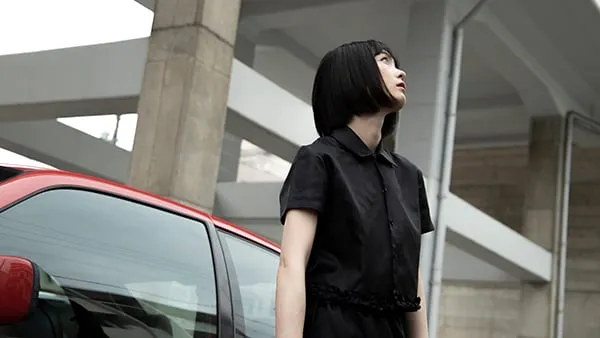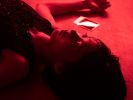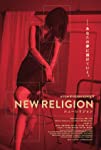Eye For Film >> Movies >> New Religion (2022) Film Review

Hollywood has taught us to think of death as a noisy thing, accompanied by a lot of ritual and big displays of emotion. When young Aoi slips out of Miyabi’s life, she does so in silence. One moment she’s on the balcony; the next she’s not. Nothing else has changed. The difference is overwhelming, yet it hardly feels real, and Miyabi will continue looking for her on the balcony for a long, long time.
Months later, after her husband has divorced her, Miyabi (Kaho Seto) is still living in the same apartment but has a new boyfriend (Saionji Ryuseigun) and is trying to make a fresh start on life. She just can’t shake the feeling that Aoi is still around somewhere, just out of sight. To make ends meet, she works in the sex industry, which, like everything else, is struggling in tough economic times. One of her co-workers seems to be particularly badly affected, and engages in a shocking act which leaves everyone who knows her feeling rattled. When the last client she visited gets in touch again, Miyabi takes on the job, her boss asking her if she can ask a few questions whilst she’s there.

As any sex worker will tell you, clients approach them for all sorts of reasons besides the obvious. Oka (Satoshi Oka), the man whom Miyabi goes to see, wants something which isn’t normally allowed: to take her picture. He manages to overcome her hesitation, however, because he isn’t trying to create pornography and he won’t include her face. He wants a photograph of her spine.
What begins as a collection of seemingly disconnected events gradually coheres with something of the chilling quality of an early Kiyoshi Kurosawa film. It’s hard to believe that this is director Keishi Kondo’s début feature, such is the assurance with which it is handled. Each shot is carefully framed, often with a focus on geometric lines, so that Miyabi never seems to exist independently of her environment. Even on the beach with Aoi, in flashbacks, she is constrained by the line of the sea. In her apartment, we never see the whole balcony space at once, adding to the sense that Aoi might still be there. Oka’s apartment, meanwhile, is dominated by a gigantic picture of a moth, whilst the film deals with themes of change and permanence, dissolution and dream.
Do photographs steal pieces of a person’s soul? Historically, many people have believed that. As she returns to see Oka again and again, each time getting a different body part photographed, Miyabi begins to look ill. Her boyfriend and boss both start to worry. But Miyabi is loathe to end the process, because the change she is undergoing – perhaps in growing closer to death – brings her closer to her daughter, with whom she is gradually able to reconnect.
There is a fungus called cordyceps which affects the brains of moths, manipulating them for its own ends. Infected creatures go willingly to their end, perhaps experiencing it as a dream. In one scene, Oka watches a video of what appear to be fungal spores. Who is dreaming and who is dreamed? With film itself a manifestation of the imaginary, boundaries begin to break down. The purest instincts can lead to destruction. A photograph taken in happier times might be the darkest of all.
Reviewed on: 29 Aug 2022
















